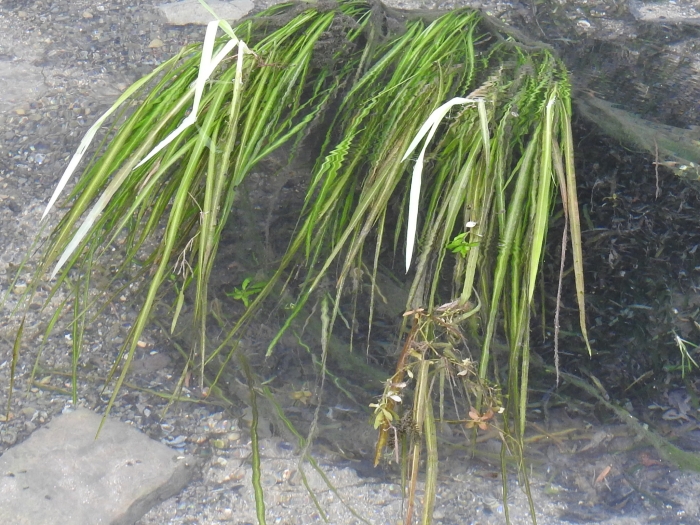Texas Wild Rice
(Zizania texana)
Texas Wild Rice (Zizania texana)
/
/

Sam Kieschnick
CC BY 4.0
Image By:
Sam Kieschnick
Recorded By:
Copyright:
CC BY 4.0
Copyright Notice:
Photo by: Sam Kieschnick | License Type: CC BY 4.0 | License URL: http://creativecommons.org/licenses/by/4.0/ | Rights Holder: Sam Kieschnick | Publisher: iNaturalist | Date Created: 2017-01-13T04:07:29-08:00 |

























Estimated Native Range
Summary
Zizania texana, commonly known as Texas wild rice, is a perennial aquatic grass endemic to a small section of the upper San Marcos River in Central Texas. It is an emergent plant, meaning it grows in water but reaches above the surface. Texas wild rice can grow to lengths of 3-7 feet and forms long, ribbon-like leaves that can be up to a meter in length. The plant produces tall, elegant flower spikes that are not particularly showy but are interesting from a botanical perspective. It is a dioecious species, with separate male and female plants, and reproduces both sexually through seed and asexually by forming clonal mats.
Texas wild rice is valued for its rarity and ecological significance, serving as an important component of the riverine ecosystem. It provides habitat for various aquatic species and helps stabilize the riverbank. In cultivation, it requires a constant flow of fresh water and is not typically grown in conventional garden settings due to its specialized habitat needs. However, it can be a subject of interest in botanical gardens or for conservation purposes. The plant is endangered and faces threats from habitat loss due to development, recreational activities that disrupt the water flow, and competition from invasive species. Conservation efforts for Zizania texana include habitat restoration, such as removing invasive species and managing water quality, to maintain the optimal conditions required for its growth and reproduction.CC BY-SA 4.0
Texas wild rice is valued for its rarity and ecological significance, serving as an important component of the riverine ecosystem. It provides habitat for various aquatic species and helps stabilize the riverbank. In cultivation, it requires a constant flow of fresh water and is not typically grown in conventional garden settings due to its specialized habitat needs. However, it can be a subject of interest in botanical gardens or for conservation purposes. The plant is endangered and faces threats from habitat loss due to development, recreational activities that disrupt the water flow, and competition from invasive species. Conservation efforts for Zizania texana include habitat restoration, such as removing invasive species and managing water quality, to maintain the optimal conditions required for its growth and reproduction.CC BY-SA 4.0
Plant Description
- Plant Type: Grass
- Height: 3-5 feet
- Width: 2-3 feet
- Growth Rate: Moderate
- Flower Color: N/A
- Flowering Season: Spring, Summer
- Leaf Retention: Deciduous
Growth Requirements
- Sun: Full Sun
- Water: High
- Drainage: Standing
Common Uses
Water Garden
Natural Habitat
Small section of the upper San Marcos River in Central Texas
Other Names
Common Names: Texas Zizania
Scientific Names: , Zizania texana,
GBIF Accepted Name: